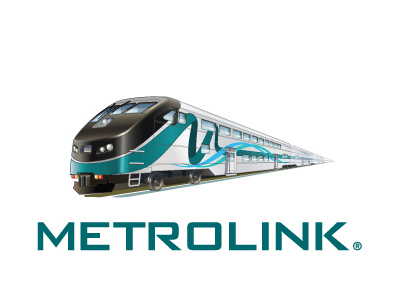On Nov. 18, crowds and officials gathered at Metrolink’s Southern California Newhall Station in anticipation of seeing the first locomotive in a $280 million-order from builder Progress Rail. By 5 p.m., some 70 minutes after the event began — the locomotive still had not appeared, and rumors began to circulate that it had stalled en route.
The train finally approached the station at about 5:20, but broke down again, 300 yards from the station and blocked a grade crossing.
The Signal in Santa Clarita Valley reports that videos taken at the scene show Art Leahy, Metrolink’s CEO, dialing other officials to try to find a solution and at one point pleading with the train engineer to move out of the crossing.
Metrolink has said that the new Tier 4 locomotives will reduce particulate matter and nitrogen oxide emissions by up to 85 percent, and will compensate for the pollution of more than 30,000 vehicles annually. So far, the project has used $169 million in taxpayer funds.















“Metrolink has a problem to fix”?? I think the locomotive MANUFACTURER has a serious problem to fix. Instead of building more and more concrete ribbons of “freeway” (ultimate oxymoron) all over California why not start stringing overhead electric power along all busy trackage and switch to electric locomotives or better yet any type of EMU equipment available on the worldwide market. Yea I know, not invented in the USA so it can not be any good, “won’t work here”, or any of millions of other excuses why lots of places in Europe with way less population density than many regions of the USA have electric trains.
I’m going to go against the grain here, and suggest that, instead of this being a case of not enough testing, a simple reason is to blame.
Something like a failure of a part (have any of us who have been using technology for more than a year never had anything simple break?) that could not have been predicted.
Or simple human failure (have any of us been guilty of that?).
It appears to be another case of the “latest and greatest” is not always the best. All the electronics are programed by programmers responsible for their small piece of the product they were contracted to do. The end result is a lot of “things and stuff” don’t work well together. I spent years working in tech support on hardware , software and firmware on communications and data systems. Often I would find a bug and was told “well tell them not to do that and we won’t have a problem”. My response was always “fix it so it does not fail and we will not have troubles.”
With the new Diesel Exhaust Emissions Standards, today’s Diesel engines are as unreliable as non-computer controlled gasoline automobile engines of the mid 1970s to mid 1980s.
I’m really astonished that Metrolink (as well as Metra, MetroNorth, MBTA and ALL of the Commuter Railroads that use Diesel Electric Locomotives) aren’t going with dedicated LNG or CNG locomotives. Emissions with these engines are far less than the Diesels with After Treatment, using Diesel Particulate Filters and/or Diesel Oxidation Catalysts. The locomotives run on fixed Routes and can all be fueled at the metropolitan city’s LNG station, between runs. These Locomotives, use Automobile Emissions technology Spark ignition engines (Otto Cycle), rather than trying to try to use that technology on Compression Ignition (Diesel Cycle) engines (and it doesn’t work well).
The government (EPA) mandates the “shutdown” feature for Diesel Prime Movers that don’t use the Diesel Exhaust Fluid (Urea) to Reduce NOx. After all, I guess that the EPA thinks it’s better that the Diesels don’t run, rather than pollute the pristine air. Let’s face it, Urea costs Money/Mile, in addition to the Cost of Fuel/Mile. It’s also something else that has to be checked daily before and after each run and added before a locomotive’s supply runs out..
The Ultimate Goal for Green Locomotives has to be Fuel Cell Locomotives, where the Electric Drive can be used without Combustion to generate the Electricity used for Traction. But there is ALWAYS pollution caused from transportation. With Catenary and Pantograph/3rd Rail systems, it happens at Power Plants and Transformer Stations. With Fuel Cells, it will be pollution from the Fuel Cell Membrane, which will probably contain hazardous chemicals in them.
Becareful what you wish for you might just get it.
As my 95 year old mom recently told me, as I related to her about the troubles we were having with our modern electric trains, ” Our machines were more reliable than yours dear” God bless you mom.
I know hindsight is 20/20, but, I think I would have done a “dry run” with the locomotive the day before, just to make sure it worked. Murphy taught us that, if anything cam go wrong it will go wrong at the worst possible time.
George Benson, one wording of Murphy’s I’ve seen is “If something can fail, it will, especially during the demonstration.”
Good thing Progressive Rail is not building airplanes! Typical railroading. Nothing adequately tested. For the money Metrolink is paying, there should be no breakdowns.
There is always a silver lining. Not only will it reduce particulates but at its present running it will save nearly 100% of fuel use.
Progress / CAT = not very good.
California, my hearts devotion, May it slip into the ocean. Always the locomotives dying, and the traction motors frying, the air pollution streaming and the F40’s screaming, I love my island of wildness, So do you. Smoke on your pipe and put that in!!!..
Wow. That’s stunning.
The new locomotives will reduce particulate matter an nitrogen oxide emissions by up to 85%. Looks like they will reduce it by 100% if they don’t run.
This looks like a bad omen. MetroLink should have ordered from Siemens or Bombardier.
This does seem sad, since a lot of people were disappointed that F125 #907 didn’t show up and that there are still some problems that Metrolink has to fix but I agree with railfan Ortiz that they will get the problem solved with the F125’s; plus they probably should have used F125 #908 since I haven’t heard anything about #908 breaking down, since this is the 2nd time I have heard about #907 breaking down
FTA:”…Dubbed the Tier 4 Locomotive, the $280 million train — about $169 million of which was footed by California taxpayers — was set to be at the Newhall Station by 4:30 p.m.
Metrolink officials invited the public, as well as city, county and even federal officials, to come view the “cleanest, most powerful and safest diesel locomotive in the nation,” and “one of the most environmentally friendly trains in the nation.”…”…By about 5:20 p.m., the crowd which had waited for the train’s arrival had dissipated, leaving Metrolink CEO Art Leahy to deal with the state-of-the-art train stuck on Santa Clarita tracks.
Leahy pleaded with a train engineer to move the locomotive forward and get out of the intersection, even invoking his title at one point during a heated back and forth.
Leahy explained the nightmare to Metrolink’s COO over the phone in front of reporters, frustrated, but optimistic about the cleaner energy potential for the locomotive.
“If there’s anything stupider that we can do, well find it,” he said. “We’ve done everything wrong tonight.”
** A statement that will last for awhile in the annals of understatement! **
Just saw Robert Wayman’s post. Maybe Metrolink forgot to fill up the DEF (urea) tank. When empty, loco makes too much NOx. Tier 4’s were supposed to have a limp home mode when out. Probably limited to notch 1. Would be interesting to know “the real story.”
Guess Progress Rail/CAT get the turkey today. Where’s an F40 or E8 when you need one. A little knowledge, a flag stick or a jumper would get one if them over the road any day.
Does anyone know why the Locomotive was unable to operate. My GM auto has a limp home feature when the computer determines it it out of specifications. Lousy performance but it will run. Progress rail is no longer P/O GM but the designers must be aware of the need for a limp home mode. Of course I remember using a broomstick to hold the ground fault relay from operating on the E units.
I thought that the new F125s went through testing at Pueblo, CO before entering revenue service. What happened?
Does MetroLink also have Tier 4s from Siemens? I thought I saw a Siemens Charger in Los Angeles.
The Big Diesel That Didn’t.
Wow, what a shame. I hope everything works.
Ouch. Walter Fegely — the Car Talk guys used to say something along the lines of the best way to take care of your car is to leave it in the garage.